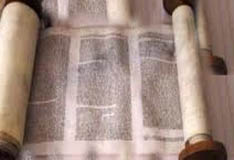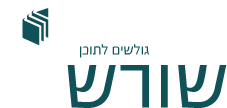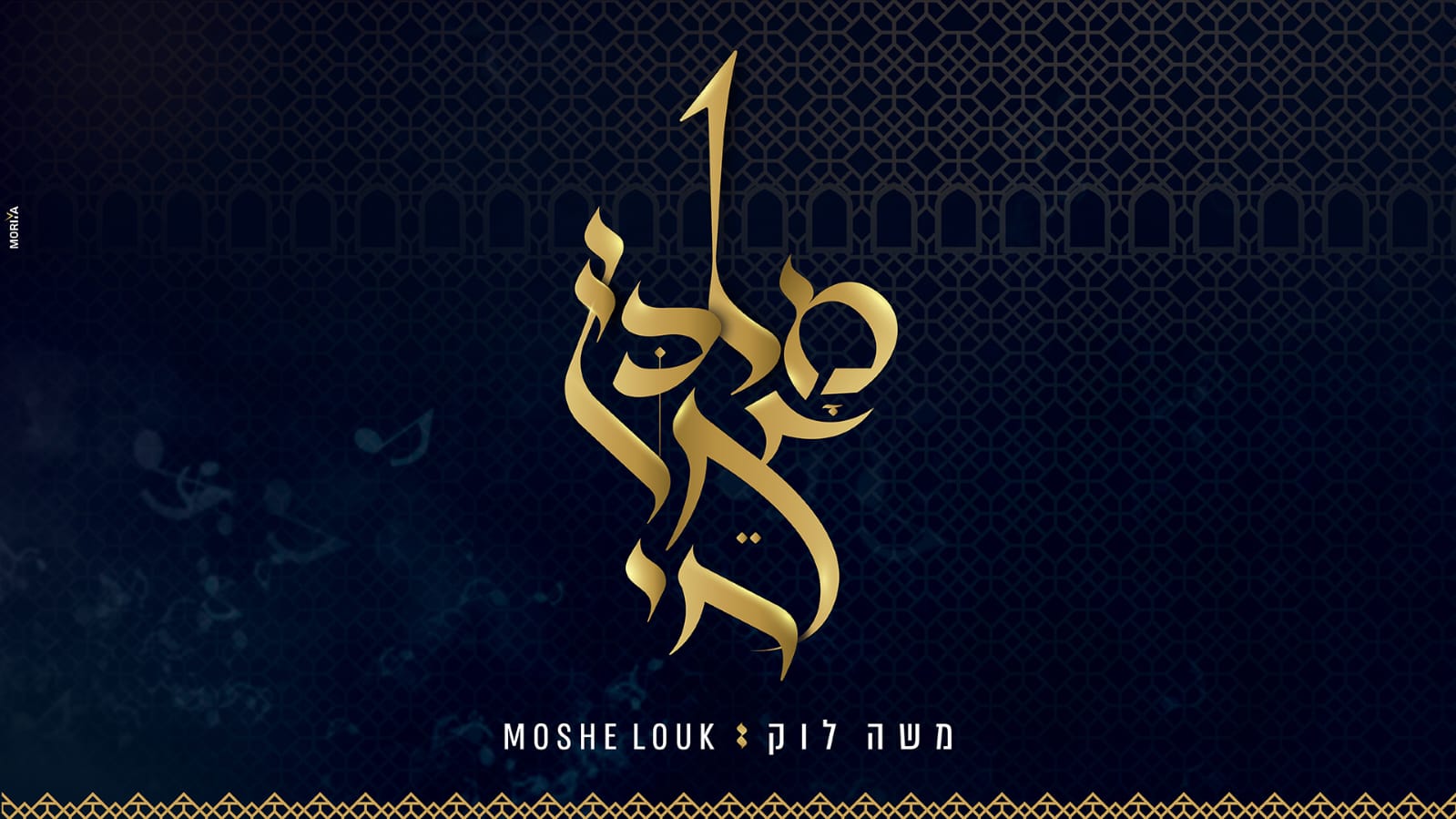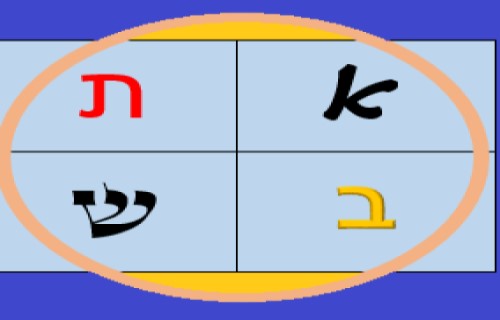Before the Ink Dried: Tracing the Torah’s Journey from Speech to Script
הרב שי טחןיא תמוז, תשפה07/07/2025Before the Ink Dried: Tracing the Torah’s Journey from Speech to Script
תגיות:כתיבת התורהמשהבהר
The reading of Parashat Behar comes at a perfect time, just before Shavuot. The first Rashi teaches us how the Torah was given to our nation, offering many insights into what is considered the most important event in Jewish history—the giving of the Torah at Har Sinai.
The parashah deals extensively with the laws of working the land during the seventh year, yet it opens by stating that these laws were given at Har Sinai. Rashi asks: Why is this particular mitzvah singled out as having been given at Sinai?
asks: Why is this particular mitzvah singled out as having been given at Sinai?
He answers that just as all the details of the mitzvah of Shemitah were taught at Sinai, so too all the mitzvot—with their general principles and specific laws—were given there. This teaches us that the Torah was not given merely as broad concepts, but with exact halachic details, all originating at Har Sinai. Thus the Shemitah example is not an exception, but a model for understanding the comprehensive nature of Matan Torah as it reflects on the way all the mitsvot were given.
Rashi’s words align with the opinion of Rabbi Akiva, as we find in the Gemara a machloket regarding the nature of the revelation at Sinai (Zvachim 115b). Rabbi Akiva holds that every detail of every mitzvah was given at Sinai. In contrast, Rabbi Yishmael maintains that general principles were given at Sinai, and the details were taught later in the Ohel Moed.
Rashi clearly follows Rabbi Akiva’s view: that all elements of the Torah, down to the smallest specifics, were given at Har Sinai. This perspective reinforces the idea that Sinai was not only the moment of receiving the foundational commandments, but the complete transmission of Torah in its totality—written and oral, general and detailed.
While the above discussion relates to how the mitzvot were transmitted, a different Gemara (Gittin 60a) discusses how and when the Written Torah was given. This refers not only to the commandments, but to the narrative portions as well—the events described in the Torah, such as the creation of the world, the lives of the Avot, the slavery in Mitzrayim, the Exodus, the journey through the desert, and so on.
It is not possible to say that the written Torah was given at Har Sinai, since many of its events took place afterward. For example, Moshe Rabbeinu strikes the rock in a manner that was not acceptable to Hashem. If the entire Torah had already been given to Moshe at Sinai, he should have known in advance not to hit the rock.
This leads the Sages to two primary understandings. One opinion holds that the Torah was given to Moshe in stages: as events unfolded, Moshe was instructed to write them down, and at the end of his life he compiled all the parts into one complete Torah scroll. Another opinion is that the entire Torah was given to Moshe at the end of the forty years, shortly before his passing.
These views highlight the difference between the giving of the Torah’s content as the mitzvot and halachot, which Rashi says were fully revealed at Sinai, and the giving of its form (the written text), which followed a different process.
The first time Moshe started writing the Torah was actually three days before Matan Torah at Har Sinai. Rashi (Shemot 24, 4) tells us that Hashem commanded him to write everything from Bereishit—the story of creation—up until that point, as he was preparing to ascend the mountain. He also wrote the few mitzvot that the nation had received earlier at Marah. This understanding is based on the words of the Mechilta d’Rabbi Shimon bar Yochai on the pasuk: "וַיִּכְתֹּב מֹשֶׁה אֵת כָּל דִּבְרֵי ה'"—“Moshe wrote all the words of Hashem.” The Mechilta explains: "אֵלּוּ דְּבָרִים שֶׁקָּדְמוּ לְמַתַּן תּוֹרָה"—“These refer to matters that preceded the giving of the Torah.”
This Rashi appears to follow the opinion that the Torah was written by Moshe gradually, part by part, as events occurred and as Hashem instructed him.
There are several verses like this one that indicates Moshe wrote parts of the Torah before his final days. How, then, does this align with the opinion that the Torah was written only at the end of Moshe's life? The Rishonim (see Rashba Gitin 60) explain that while Moshe compiled and finalized the Torah at the end, he was instructed by Hashem throughout his life to write down specific sections as they occurred. At the same time, he was reviewing and teaching the rest of the Torah orally, without writing it down until the conclusion of his life.
Moreover, there are sources that indicate written scrolls existed even before Moshe Rabbeinu. For example, Shemot Rabbah 5:18 on Parashat Shemot states:
"תִּכְבַּד הָעֲבֹדָה עַל הָאֲנָשִׁים וְיַעֲשׂוּ בָהּ וְאַל יִשְׁעוּ בְּדִבְרֵי שָׁקֶר" (Shemot 5:9) –
“Let the work be heavier upon the men so that they will engage in it and not turn to false words.”
A question is asked: What were the "false words" that disturbed Pharaoh? The Midrash explains: "This teaches that they had scrolls passed down through tradition from the forefathers, with which they would delight from one Shabbat to the next, reading that Hashem would ultimately redeem them, since they would rest on Shabbat."
This suggests that even prior to the formal giving of the Torah, there were written traditions preserved and studied among Bnei Yisrael.
Rashi also writes that Yaakov sent Yehudah ahead to Egypt to establish a Beit Midrash, indicating that they were already engaged in Torah study. However, while it’s clear they were learning Torah, it was not the written Torah as we have it today. Rather, the Torah itself existed in a different form, having been created even before the creation of the world.
The parashah deals extensively with the laws of working the land during the seventh year, yet it opens by stating that these laws were given at Har Sinai. Rashi

He answers that just as all the details of the mitzvah of Shemitah were taught at Sinai, so too all the mitzvot—with their general principles and specific laws—were given there. This teaches us that the Torah was not given merely as broad concepts, but with exact halachic details, all originating at Har Sinai. Thus the Shemitah example is not an exception, but a model for understanding the comprehensive nature of Matan Torah as it reflects on the way all the mitsvot were given.
Rashi’s words align with the opinion of Rabbi Akiva, as we find in the Gemara a machloket regarding the nature of the revelation at Sinai (Zvachim 115b). Rabbi Akiva holds that every detail of every mitzvah was given at Sinai. In contrast, Rabbi Yishmael maintains that general principles were given at Sinai, and the details were taught later in the Ohel Moed.
Rashi clearly follows Rabbi Akiva’s view: that all elements of the Torah, down to the smallest specifics, were given at Har Sinai. This perspective reinforces the idea that Sinai was not only the moment of receiving the foundational commandments, but the complete transmission of Torah in its totality—written and oral, general and detailed.
While the above discussion relates to how the mitzvot were transmitted, a different Gemara (Gittin 60a) discusses how and when the Written Torah was given. This refers not only to the commandments, but to the narrative portions as well—the events described in the Torah, such as the creation of the world, the lives of the Avot, the slavery in Mitzrayim, the Exodus, the journey through the desert, and so on.
It is not possible to say that the written Torah was given at Har Sinai, since many of its events took place afterward. For example, Moshe Rabbeinu strikes the rock in a manner that was not acceptable to Hashem. If the entire Torah had already been given to Moshe at Sinai, he should have known in advance not to hit the rock.
This leads the Sages to two primary understandings. One opinion holds that the Torah was given to Moshe in stages: as events unfolded, Moshe was instructed to write them down, and at the end of his life he compiled all the parts into one complete Torah scroll. Another opinion is that the entire Torah was given to Moshe at the end of the forty years, shortly before his passing.
These views highlight the difference between the giving of the Torah’s content as the mitzvot and halachot, which Rashi says were fully revealed at Sinai, and the giving of its form (the written text), which followed a different process.
The first time Moshe started writing the Torah was actually three days before Matan Torah at Har Sinai. Rashi (Shemot 24, 4) tells us that Hashem commanded him to write everything from Bereishit—the story of creation—up until that point, as he was preparing to ascend the mountain. He also wrote the few mitzvot that the nation had received earlier at Marah. This understanding is based on the words of the Mechilta d’Rabbi Shimon bar Yochai on the pasuk: "וַיִּכְתֹּב מֹשֶׁה אֵת כָּל דִּבְרֵי ה'"—“Moshe wrote all the words of Hashem.” The Mechilta explains: "אֵלּוּ דְּבָרִים שֶׁקָּדְמוּ לְמַתַּן תּוֹרָה"—“These refer to matters that preceded the giving of the Torah.”
This Rashi appears to follow the opinion that the Torah was written by Moshe gradually, part by part, as events occurred and as Hashem instructed him.
There are several verses like this one that indicates Moshe wrote parts of the Torah before his final days. How, then, does this align with the opinion that the Torah was written only at the end of Moshe's life? The Rishonim (see Rashba Gitin 60) explain that while Moshe compiled and finalized the Torah at the end, he was instructed by Hashem throughout his life to write down specific sections as they occurred. At the same time, he was reviewing and teaching the rest of the Torah orally, without writing it down until the conclusion of his life.
Moreover, there are sources that indicate written scrolls existed even before Moshe Rabbeinu. For example, Shemot Rabbah 5:18 on Parashat Shemot states:
"תִּכְבַּד הָעֲבֹדָה עַל הָאֲנָשִׁים וְיַעֲשׂוּ בָהּ וְאַל יִשְׁעוּ בְּדִבְרֵי שָׁקֶר" (Shemot 5:9) –
“Let the work be heavier upon the men so that they will engage in it and not turn to false words.”
A question is asked: What were the "false words" that disturbed Pharaoh? The Midrash explains: "This teaches that they had scrolls passed down through tradition from the forefathers, with which they would delight from one Shabbat to the next, reading that Hashem would ultimately redeem them, since they would rest on Shabbat."
This suggests that even prior to the formal giving of the Torah, there were written traditions preserved and studied among Bnei Yisrael.
Rashi also writes that Yaakov sent Yehudah ahead to Egypt to establish a Beit Midrash, indicating that they were already engaged in Torah study. However, while it’s clear they were learning Torah, it was not the written Torah as we have it today. Rather, the Torah itself existed in a different form, having been created even before the creation of the world.
הוסף תגובה
עוד מהרב שי טחן
עוד בנושא אמונה







